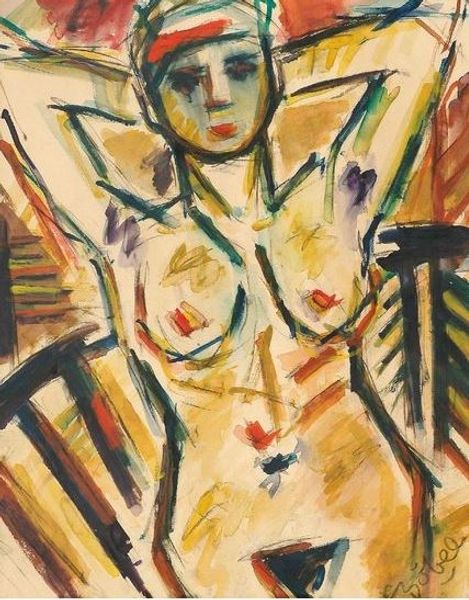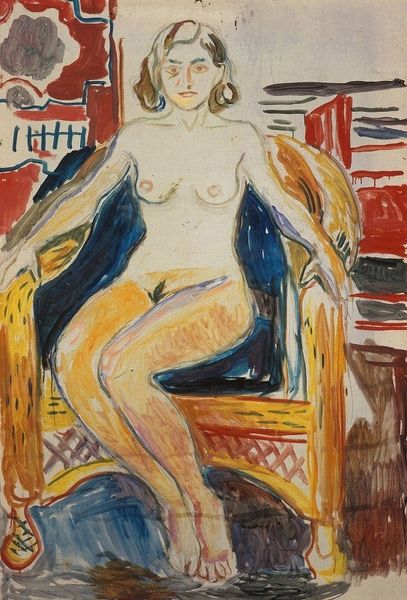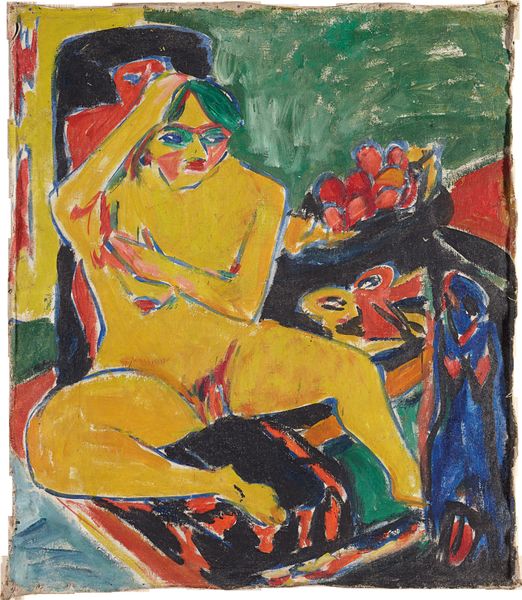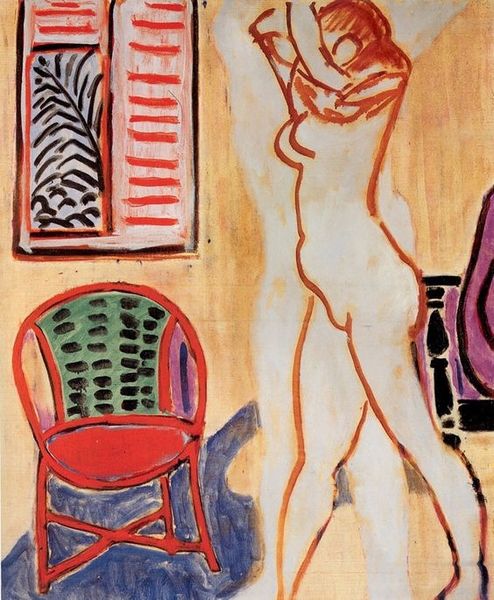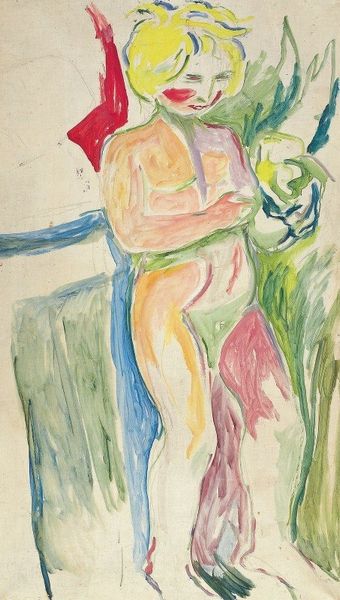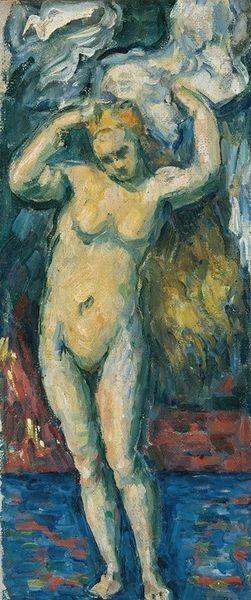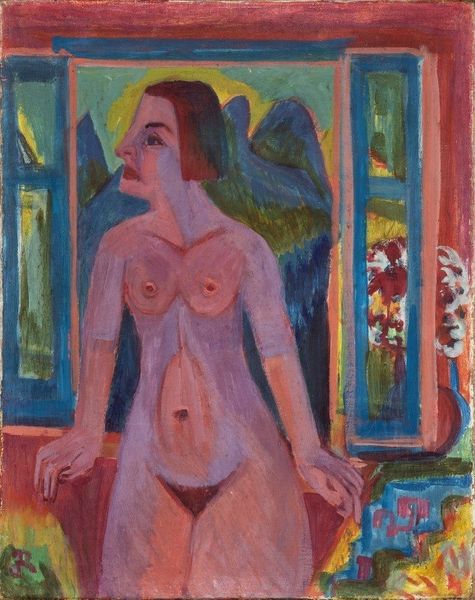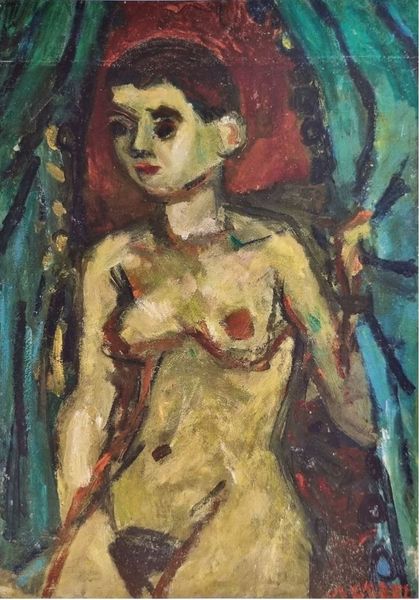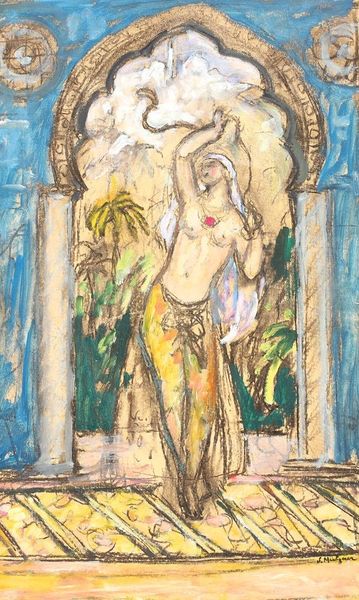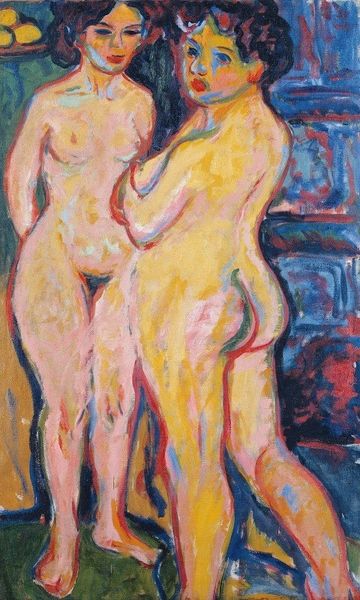
Copyright: Ding Yanyong,Fair Use
Curator: Ding Yanyong’s "An Artist and His Model", dating to 1971. It’s an acrylic painting depicting two figures, quite intimately posed. What’s your initial reading of this artwork? Editor: It strikes me as possessing a kind of awkward tenderness, even if rendered with crude expressiveness. There is a naive quality that is somewhat beguiling, wouldn’t you say? The bold palette seems intended to amplify some hidden vulnerability in their rapport. Curator: The colour choices are definitely important, I agree. Look at how Yanyong articulates the contours, employing fauve-like saturated colors. The vibrant green in the background contrasts vividly with the model's peachy skin tones. And notice how their bodies are rendered: simplified forms, reduced to their essence. There’s a conscious flatness, undermining any illusion of depth or conventional sensuality. Editor: The simplification echoes a turn away from classical forms, as figures are increasingly viewed as part of their surrounding environment, becoming mere abstract colour planes. We see an assertion of modernity, but did this challenge societal values about public displays of nudity and artist/muse relations? The Cultural Revolution was in full swing then. Curator: It's essential to recall the cultural context. Although part of an avant-garde circle early on, Yanyong did attempt to revive Chinese traditional art and calligraphy when conditions permitted it. These later figural works, while raw and spontaneous, represent an effort to harmonize avant-garde practice with Chinese conventions. Editor: Do you feel that balance always resolves itself in the piece? Or might we perceive the raw expressiveness as speaking to something deeper about the suppression of individualism during that period? Could the seemingly careless style also signal dissent? Curator: The figures, though simply rendered, seem to retain both the vitality of human life, and its potential constraints and limitations. Whether intentional or not, the very starkness suggests much. Editor: So the political undercurrent subtly shapes the aesthetic experience, reflecting both social mores and artistic choices, despite a vibrant facade? A valuable, yet very sobering thought. Curator: It encourages us to look past immediate surface, reminding us of both inherent structural choices, and those dictated by social circumstances.
Comments
No comments
Be the first to comment and join the conversation on the ultimate creative platform.
